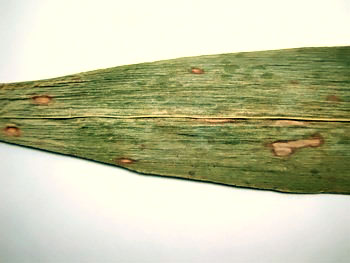Look the nutritional content, the potato is the main source of carbohydrates. Potato became the staple food in many western countries. To get more good production of potato also to know about management pest and diseases of this plant.
The basic for successful management of potato pest, diseases and nutritional disorder I integrated crop management. This implies prevention of insect infestation and infection by pathogens through the use of adequate cultural practices and the conservation of natural enemies. Adequate control practices include the selection of healthy planting material from well adapted varieties, rotation, good field sanitation and maintenance of soil fertility. Conservation of natural enemies involves avoidance of pesticide use, enhancement of natural enemy action through favorable cultivation practices and the introduction of natural enemies if necessary.
Many insect species attack potato and the importance of different species varies between agro ecological zones. Within a zone, the importance of species depends on the season; many insect pest are a problem mainly in dry periods
The pest and diseases of potatoes plant as follow:
A. Pest on Potatoes Plant
1. Caterpillar (Spodoptera litura)
Symptoms: caterpillars attack the leaves by eating the epidermis and the leaf tissue until exhausted.
Control:
Mechanically by cutting the leaves that have been plastered with eggs; chemistry with Azordin, Diazinon 60 EC, 50 EC Sumithion. 2. Aphids (Aphis Sp)
2. Aphids (Aphis Sp)
Symptoms: aphids suck fluids and infect the plant, can also transmit the virus to soybean plants.
Control: a way to cut and burn infected leaves. If so much plant have been infected you can spray with Roxion 40 EC, Dicarzol 25 SP insecticide.
3. Gryllotalpa
Symptoms: attack the bulbs in the garden, roots, young shoots and young plants. As a result, plants become susceptible to bacterial infections.
Control: Sevin 85 S using the flour mixed with manure.
4. Root weevils (Phtorimae poerculella)
Symptoms: the leaves are dark red and looks like a tangle of yarn that is a gray caterpillar wrapping material. Tubers are attacked when cleaved, would look the pits because most bulbs have been eaten.
Control: chemically using Selecron 500 EC, 25 EC Ekalux, Orthene & 5 SP, Lammnate L.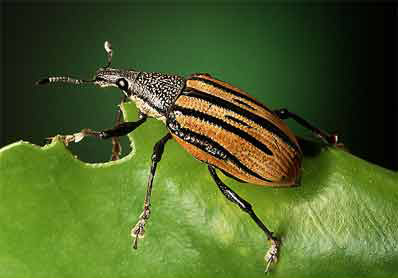 5. Thrips (Thrips tabaci)
5. Thrips (Thrips tabaci)
Symptoms: Potato leaves have patches of white, then changed to a silver gray and then dry. The attack starts from the ends of the young leaves.
Control: mechanically by cutting the leaves are affected; chemically using Basudin 60 EC, Mitac 200 EC, Diazenon, Bayrusil Dicarzol 25 EC or 25 SP.
B. Disease of Potato
1. Late blight (Phytopthora infestans fungus).
Symptoms: Small patches occur in green-gray and slightly damp, then these patches will grow and the color changed to brown to black with white edges of the sporangium. The next leaves will rot and die.
Control: Insecticide that can use to control this pest are Antracol 70 WP, Dithane M-45, Brestan 60, Polyram 80 WP, 80 WP Velimek insecticide..
2.Bacterial Diseases by Pseudomonas solanacearum
Symptoms: The top of potato young leaves some wilted plants and old leaves, leaf yellowing of the bottom.
Control: Prevent the diseases attacking by keeping the garden sanitation, plant crop rotation. Chemical eradication can use the bactericidal, Agrimycin atu Agrept 25 WP.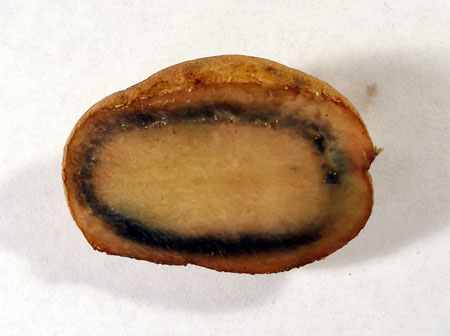
3. Root rot disease (Colleotrichum coccodes )
Symptoms: The leaves turn yellow and curl, then withered and dry. At the plant in the ground there are patches of brown. Infection will cause root rot and young tubers.
Control: Prevent from diseases attacking by crop rotation, sanitation, gardens and the use of good seed.
4. Fusarium Disease (Fusarium sp. )
Symptoms: The infection causes tuber rot in tubers that causes plants to wilt. This disease also attacks potatoes in storage. Infection enters through the wounds caused by nematodes / mechanical factors.
Control: Please to avoid injury when weeding. Chemical control with Benlate.
5. Dry spot disease (Early Blight) or Alternaria solani
Fungi diseased are breed in dry areas.
Symptoms: The infected leaves stained irregularly scattered small, dark brown, and then extended to younger leaves. Tuber skin surface irregularly mottled dark, dry, wrinkled and tough.
Control: Prevent from this fungi attacking by crop rotation.
6. Disease due to virus
Viruses that attack are:
- Potato Leaf Roll Virus (PLRV) causes leaf curl;
- Potato Virus X (PVX) causes latent mosaic on the leaves;
- Potato Virus Y (PVY) causing mosaic or local necrosis;
- Potato Virus A (PVA) causes mosaic software, (5) Potato virus M (PVM) causes mosaic roll;
- Potato Virus S (PVS) causing mosaic limp.
Symptoms: in the attack, the plants grow stunted, straight , leaf yellowing and tissue death. The spread of viruses carried by farm equipment, aphids Aphis spiraecola, A. gossypii and Myzus persicae, and Coccinella Epilachna beetles and nematodes.
Control: no pesticides to control the virus, prevention and control is done by planting virus-free seedlings, cleaning equipment, prune and burn diseased plants, eradicate vectors and crop rotation.

 2. Flies Seeds (Antherigona exigua Stein)
2. Flies Seeds (Antherigona exigua Stein)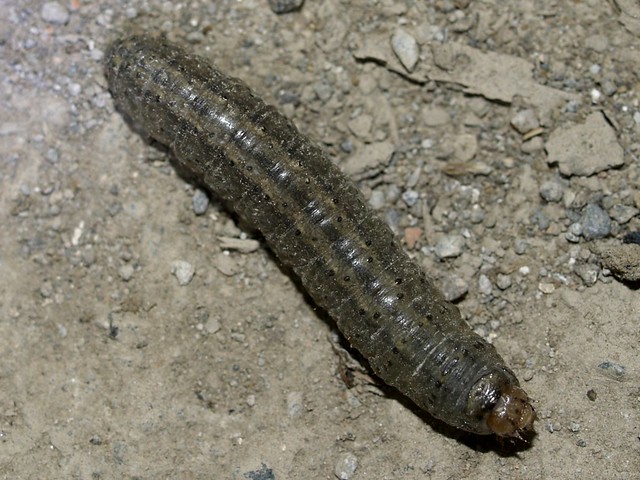 4. Leaf caterpillar (Prodenia litura F)
4. Leaf caterpillar (Prodenia litura F) 5. Stem borer (Sesamia inferens Wlk)
5. Stem borer (Sesamia inferens Wlk)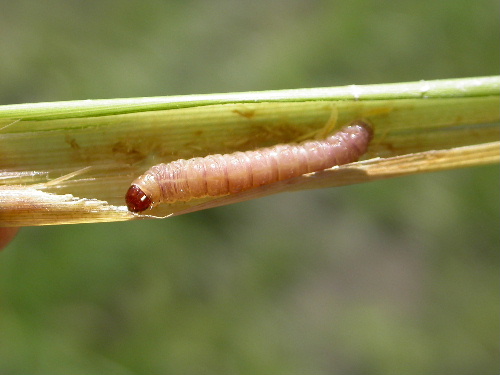 6. Army worm (Leucania unifenuta HAW)
6. Army worm (Leucania unifenuta HAW) 7. Cob worm (Heliothis armigera HSN)
7. Cob worm (Heliothis armigera HSN) 9. Helminthosporium diseases
9. Helminthosporium diseases 